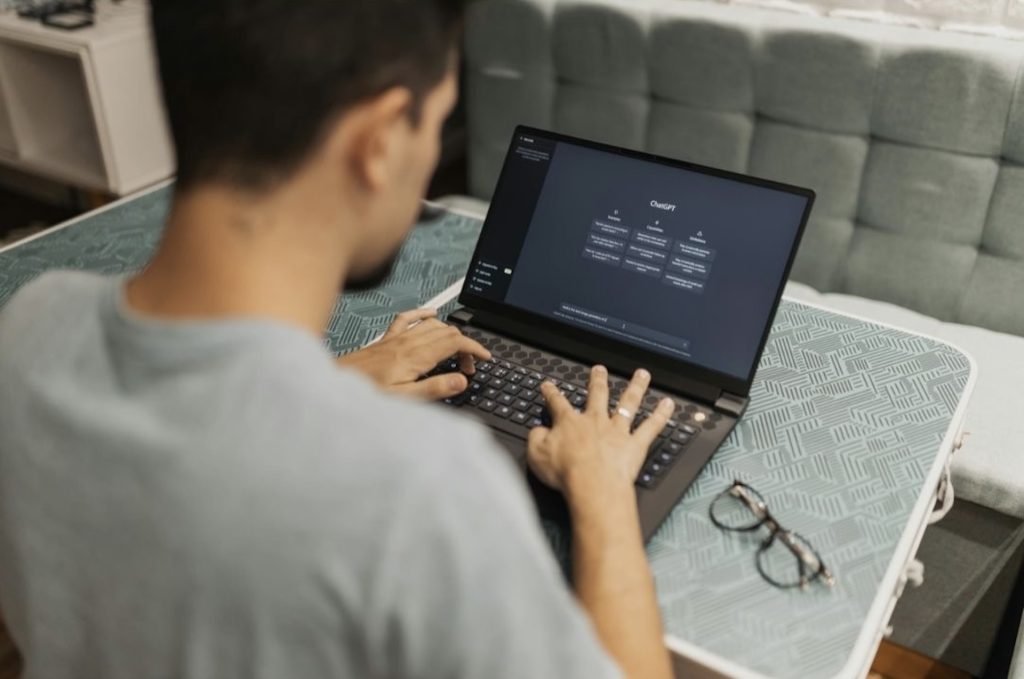
Two Decades of Championing Entrepreneurship in the Philippines
October 6, 2025
The Private Sector’s Power to Drive Inclusive Prosperity in the Region
October 20, 2025
Prosperity Through Digital Literacy for All
At the little gathering we had last week for the people who comprised the Go Negosyo team over the last 20 years, we were fortunate enough to have Fr. Benigno Beltran, SVD to officiate the invocation. Later that week, Fr. Beltran shared with me the good news about the Department of Education (DepEd) greenlighting the Sandiwaan Center for Learning’s use of AI in the department’s Alternative Learning System (ALS) program.
The Sandiwaan Center is located in Smokey Mountain, a sprawling community in Tondo, Manila built around an informal landfill which grew over the years as waste pickers came to make a living from other people’s refuse. It was made (in)famous by a tragic landslide of trash many years back. This community of scavengers became the symbol of poverty in the Philippines; now it is among those at the forefront of using cutting-edge technology to help the least fortunate.
Using technology, they are trying to bridge the learning gap that often leaves behind people who have no access to technology or access to education about technology. In today’s world, merely learning to read, write and perform arithmetic is not sufficient; digital literacy is essential.
The seeds of AI application in DepEd’s ALS program actually started about five years ago. And now with DepEd Sec. Sonny Angara fully behind the good work of Sandiwaan, and with Sandiwaan going full speed ahead with its project to train ALS teachers in using the technology in their work, things are looking up for the estimated 11 million Filipino school dropouts who stand to benefit from Sandiwaan’s pioneering work to help bridge the digital literacy gap among the country’s poorest.
As an example of what is possible, Fr. Beltran shared how ALS learners in the elementary level at the Sandiwaan Center were able to edit their reports on their cellphones using Canva, and then presented them in class on the school’s 3D Interactive Board. This is, of course, on top of the training being given to ALS teachers who are being upskilled by the project as they use AI in their work.
Sandiwaan took the ALS program several notches higher and made it relevant to the digital native young Filipinos. This is important because more than a quarter of our population was born with social media already in place (they are 15 years and younger), and half of our population (25 years and younger) was born with the internet already a reality.
To them, becoming content creators, web page designers or influencers comes easily, and they live their lives on social media. They communicate via apps like Viber, TikTok, Instagram, WhatsApp, Facebook and many more. The more enterprising set up shops on these platforms.
This is the next step in the ALS education, where Gen Z and Gen Alpha Filipinos who come from poor families have a chance at a better life through this radical transformation of education, enabled by DepEd’s ALS program and amplified by the power of technology.
ALS itself is a transformative program. It is a parallel learning system that provides a practical option for those who were unable to complete their formal education. While the formal education system is structured around classroom settings and overseen by qualified teachers, ALS’s non-formal education, in contrast, takes place outside traditional classrooms, often in community learning centers, barangay multi-purpose halls, libraries or even at home. It is facilitated by ALS learning staff, such as mobile teachers and district ALS coordinators, following a schedule and location agreed upon by both learners and facilitators. ALS programs are modular and flexible, meaning learning can take place anytime and anywhere, depending on the convenience and availability of the learners.
Speaking as a college dropout myself, the idea of being able to have a second chance at education resonates with me. I was fortunate to have had mentors in my immediate circle to guide me in my work in business, and to have had the resources to make it through life even without that college diploma. But I can imagine how difficult it must be for those who are without those privileges. The simple act of writing one’s name to apply for a job or even a government ID can be daunting. For many poor Filipinos in the countryside who had to forego a formal education because they had to work at an early age, or because schools were inaccessible (as is the case for some indigenous peoples), a chance to learn to read and write is a giant leap toward a better life.
Consider the stark contrast in our world: on one end, children have access to schools with abundant resources, while others lack basic necessities like electricity, internet access and educational tools. Digital literacy is just one crucial step, but it is a step worth taking. With hope, we can look forward to having more good people in government and the private sector addressing the broader aspects of the digital divide, investing in the infrastructure and systems necessary for digital technology to fulfill its promise as a tool for inclusive prosperity.
Originally Published in Philippine Star


2/F RFM Corporate Center, Pioneer cor. Sheridan Sts. Mandaluyong City, Metro Manila, Philippines

